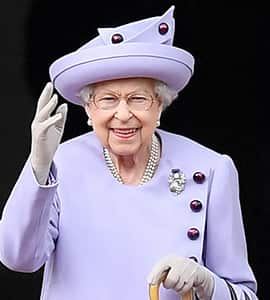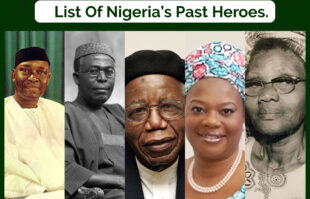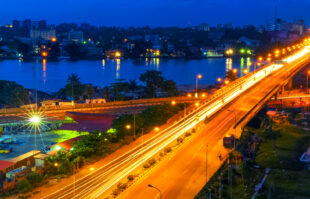It is impossible to overstate the significance of Queen Elizabeth II’s contribution to the emancipation of nations all over the world as the world mourns the passing of the longest-serving monarch in modern history. The Queen granted independence to eleven African states on the African continent during her time as the highest head of the Commonwealth nations and the sovereign monarch of the United Kingdom.
The Queen was born on April 21, 1926, ascended at the age of 25, and ruled for 70 years as the sole ruler of Northern Ireland, Scotland, England, and Wales, which is popularly known as the United Kingdom or Great Britain. She also had close ties with the African continent, especially those countries that were colonised by British countries.

In this piece, I will be bringing to light the African countries that gained independence during the reign of Queen Elizabeth II.
1. Ghana
Ghana, originally the Gold Coast, is a country in West Africa and a former British colony. The nation is endowed with several natural resources, particularly gold. Its population exceeds 31.07 million, and it borders anglophone countries including the Republic of Togo, Burkina Faso, and the Ivory Coast. Ghana attained independence on March 6, 1957, and on July 1, 1960, it established a republic under Kwame Nkrumah as its first president.
2. Nigeria
Because of its location on the African map, Nigeria is frequently referred to as the “Giant of Africa” or, even better, the “Trigger of Africa.” The Federal Republic of Nigeria is the most populous black country in the world with a population of more than 250 million. Nigeria became a British colony in the early 1800s, but on October 1, 1960, it gained independence, and on October 1, 1963, it became a republic. The Federal Capital Territory (FCT) of Abuja is home to the largest economy in Africa.
3. South Africa
South Africa was a British colony with a population density of over 60 million people. South Africa is a country with a rich cultural and traditional history, much like Nigeria, Kenya, and Ghana. Its three respective capitals—Cape Town, Pretoria, and Bloemfontein—serve a variety of functions. Although the nation gained its independence in the early 1990s, Nelson Mandela was elected president in the first nationwide elections conducted in 1994. It is also said they gained independence from the British on May 31st, 1961.
4. Sierra Leone
Less than 10 million people live in the tiny West African nation of Sierra Leone. Freetown, the nation’s capital, was formerly a British colony. Sierra Leone became a sovereign nation on April 27, 1961, and Sir Milton Margai was elected as its first president.
5. Uganda
Kampala, the capital of Uganda, is located in East Africa. Uganda, another former British colony, became independent on October 9, 1962, with Queen Elizabeth II serving as the country’s head of state and monarch. Uganda established itself as a republic in October 1963 while keeping its Commonwealth of Nations membership.
6. The Gambia
One of the well-known West African countries whose predecessor to statehood cannot be ignored in history texts is The Gambia. The Gambia will have a population of 2.417 million in 2020, according to the World Bank’s development index. Before gaining independence on February 18, 1965, the West African country was also a part of the British colony. Its first president was Sir Dawda Kairaba Jawara, and Banjul serves as its capital.
7. Kenya
Kenya is a country in East Africa with a population of more than 54 million. It is a nation in Africa that has a lengthy, deeply ingrained cultural and traditional past. Kenya gained independence as a sovereign state from the British Empire on December 12, 1964, when the Republic of Kenya was proclaimed and Jomo Kenyatta was elected as Kenya’s first president.
8. Malawi
The Republic of Malawi is a small nation in East Africa with a population of about 20 million people, much like Kenya. Tanzania’s neighbours to the north and northeast; Mozambique to the east, south, and southwest; and Zambia to the west all share a boundary with the country. Hastings Banda served as Malawi’s first President after it became independent on July 6, 1964, after being a British colony.
9. Rhodesia (Zimbabwe)
Africa’s southern region is home to Zimbabwe, historically known as Rhodesia. There are more than 15 million people living there. It was also one of the ten countries in Africa that were British colonies. Harare, the nation’s capital, and a unilateral declaration of independence were signed on November 11, 1965. When Zimbabwe became a republic in 1970, Canaan Banana served as the country’s first president and Robert Mugabe as the first prime minister.
10. Mauritius
With a population of slightly over 2 million, Mauritius is a small island republic in the Indian Ocean. Its capital is Port Louis, and it was a British colony until it gained independence on March 12, 1968, with Sir Seewoosagur Ramgoolam serving as its first prime minister.





